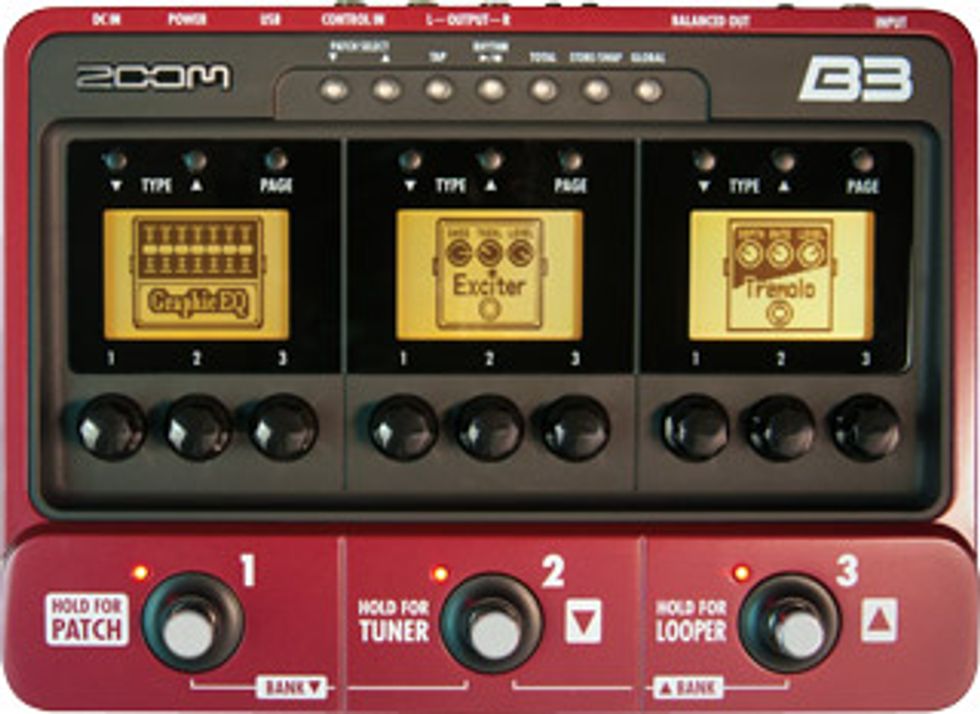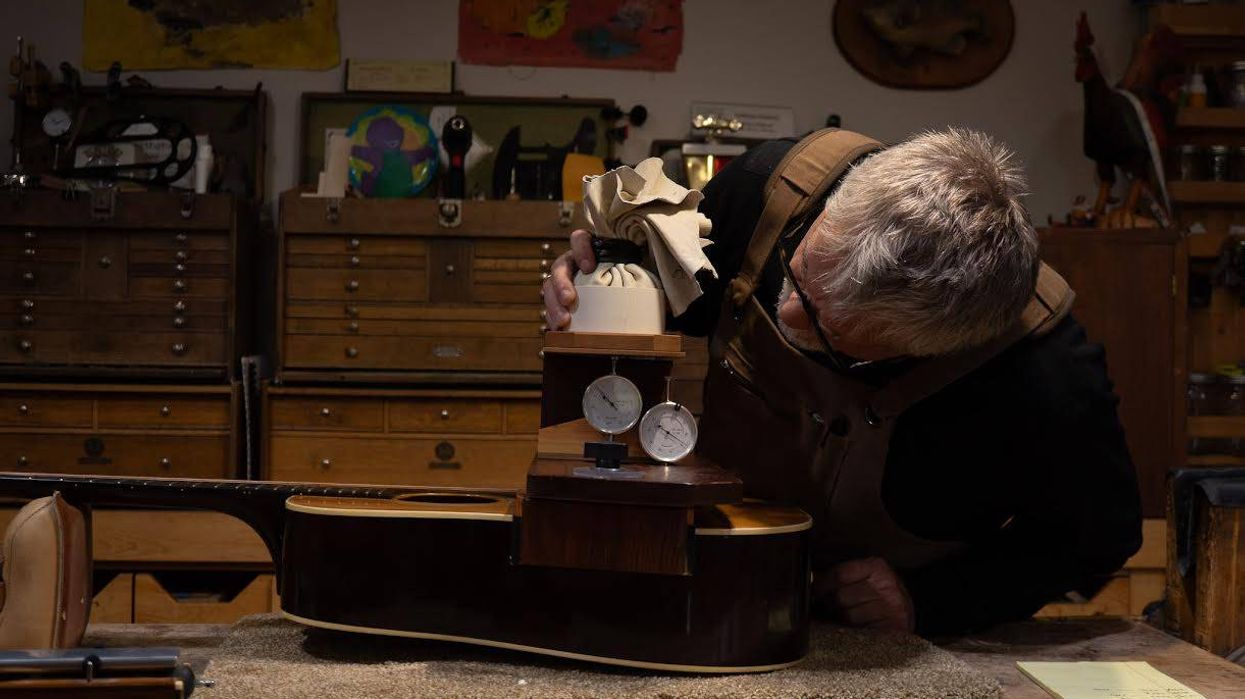
Most bassists like to keep things simple when it comes to their rigs—a little compression here, a light dash of fuzz or overdrive to taste, and maybe a splash of chorus if the mood is right. For countless purveyors of all things low, it’s a setup that has worked for decades. Zoom’s B3 multi-effects pedal attempts to merge the streamlined mentality of a bassist with an exhaustive set of tonal tools, billing the new unit as an all-in-one, compact solution for any bassist playing any musical style.
You Little Wonder, You
Understanding that bassists typically
tend to have simpler pedal
setups than guitarists, Zoom
designed the layout of the B3
for quick and painless access to
the most essential functions. The
three footswitches engage or disengage
a dedicated amp model
or effect, each of which is set up
as an individual “channel” that
sports three control knobs and
a super-vivid LCD display. And
there shouldn’t be any worries
from players concerned about
structural failure. This little red
rocker has a very sturdy build and
smoothly tapered controls, and
emits satisfyingly solid clicks when
you depress the footswitches. It’s
designed to be used in a variety of
situations, be it direct to a mixing
console via the XLR out, feeding
the signal to your favorite DAW
through USB (which also works
as an alternative power source), or
the traditional instrument-to-amp
configuration with 1/4" cables.
While we’re on the heady subject of musical scenarios, the B3 is loaded with enough effects and amp modeling to cover just about any situation you might face. There are an astonishing 99 stompboxes to choose from, ranging from subtle overdrives and fuzzes to subatomic-shattering synths, expansive reverbs, endlessly tweakable choruses, and the list goes on and on. There’s even a 40-second looper and an organ simulator for fans of the “other B3” out there. A total of 12 amp models can be brought in, which use Zoom’s newly updated ZFX-IV DSP processor to react and breathe in a very tube-like manner. With the included Edit&Share software, you can create up to 100 personalized presets on your computer and then store them in the pedal itself.
Ratings
Pros:
Amp models have very natural response.
Endless tone options from a huge array of effects.
Solid build.
Cons:
Synth tones can be overbearing.
Tones:
Ease of Use:
Build:
Value:
Street:
$199
Zoom
zoom.co.jp
Hitting All the
Right Notes
Firing up the B3 between a
Verellen Meatsmoke head and
an ’83 Kramer USA Striker bass,
the emitted tones covered a wide
gamut—some were quite
exceptional, while others were
less than stellar. Fortunately,
the unit really excelled at
shaping meat-and-potatoes
tones, with especially outstanding
response and low-end
muscle from the Hartke
HA3500 and Fender Bassman
100 models. The way each amplifier
model handled the changes
in my attack—such as dropping
the pick to play fingerstyle—was
quite impressive. Each emulation
offered unique response characteristics,
and I particularly enjoyed
how well the Marshall Super Bass
model brought out grinding mids
when I dug into the strings. In
fact, it was eerily similar to how
an old ’73 model I used to own
would react in that same situation.
Setting up each of the three banks was very intuitive, and overall, using the unit was a breeze. The only time I needed to dig out the manual was when I couldn’t figure out how to lower the pedal’s USB recording level, which ended up not taking much effort at all. I really started to see and hear the pedal’s power while I was assigning stompboxes to the channels, and most of them were very usable and user-friendly. That said, some of the synths seemed to have overly aggressive voicings at times (which would lose some of their overall punch when I dialed them back), and I did experience some tracking issues with the octave-fuzz models. I also had a little difficulty with the organ simulator, which seemed to have a toy organ quality that was hard to control or enrich. But despite those minor grievances, most of the effects produced a wide range of subtle to wild tones that I had a blast playing with.
The Verdict
Zoom has made a name by
designing gear that marries
low cost and a short learning
curve, and the B3 is one of the
best results of that mission so
far. The stock output-volume
levels might need some tweaking
if you’re recording direct to
USB—and if you’re not careful
some of the effects can be a
little intense—but with its great
price-to-performance ratio, this
multi-effects/direct recording
unit for bassists is a keeper.







![Rig Rundown: AFI [2025]](https://www.premierguitar.com/media-library/youtube.jpg?id=62064741&width=1245&height=700&quality=70&coordinates=0%2C0%2C0%2C0)












 Shop Scott's Rig
Shop Scott's Rig















































